Top Tips for Energy-Efficient Kitchen Island Pendant Lighting
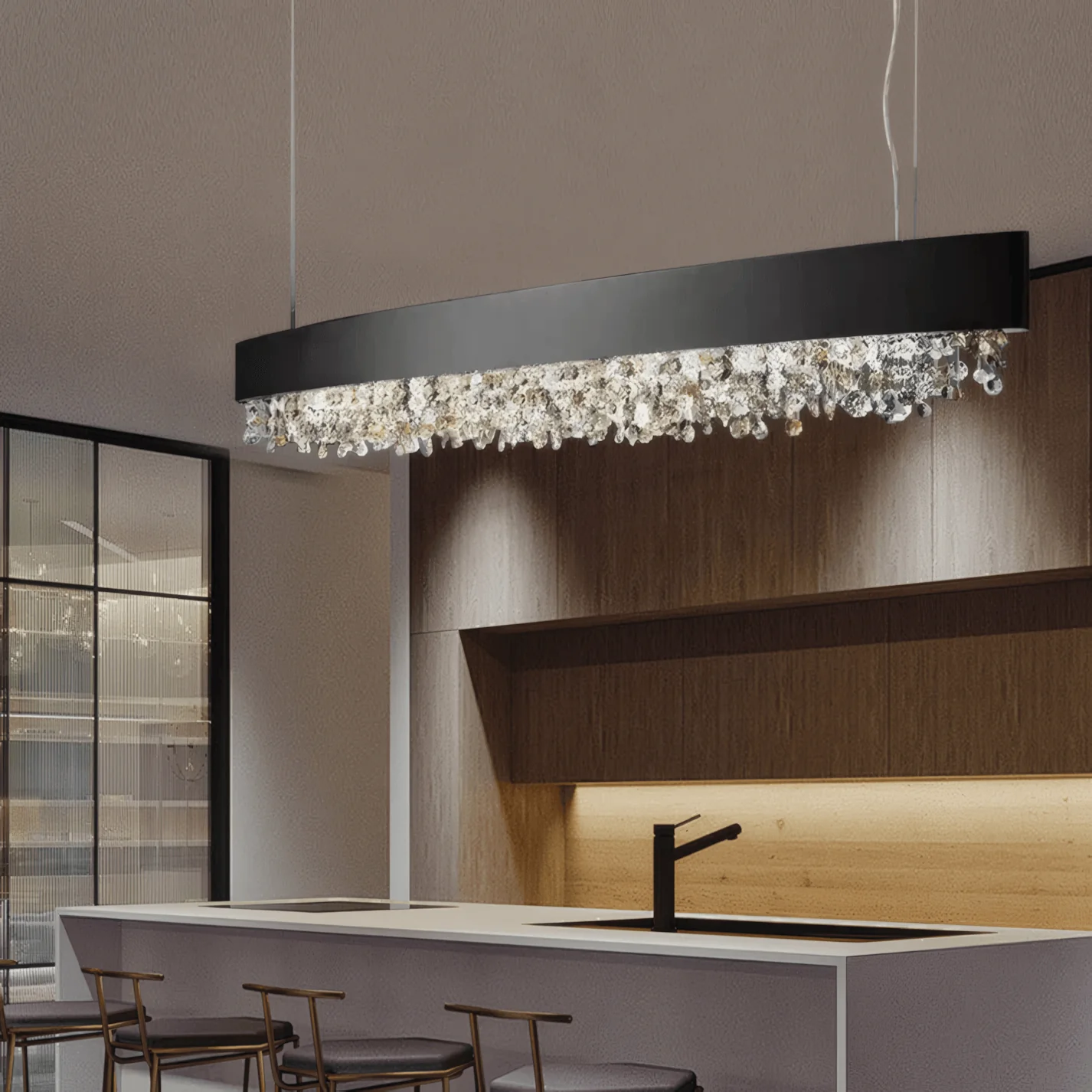
Lighting plays a big role in your kitchen, especially over the island. It’s the heart of the space where you prep, cook, or gather with family. Choosing energy-efficient pendant lighting isn’t just about cutting down on electricity bills. It’s also about creating a warm, stylish, and functional environment. Imagine having kitchen island pendant lights for 2025 that save energy while making your kitchen look modern. Doesn’t that sound like a win-win?
Tip: Always consider how your lighting fits your kitchen’s design and purpose. It’s not just about brightness—it’s about balance.
Key Takeaways
Using energy-saving lights, like LEDs, cuts costs and helps the environment. It also makes your kitchen more useful.
Pick pendant lights that match your kitchen's look. Think about size, style, and if they can dim for more control.
Check for energy labels and certifications, like Energy Star, to pick safe and efficient lights.
Use different lighting layers: general, task, and accent. This makes your kitchen bright and welcoming.
Install and place pendant lights correctly. This improves safety and lighting, making your kitchen work better.
Understanding Energy Efficient Lighting
Benefits of energy-efficient lighting for kitchens
Energy-efficient lighting transforms your kitchen into a space that’s both functional and eco-friendly. LED bulbs, for instance, consume far less electricity than traditional incandescent bulbs. This means you save money on energy bills while reducing your carbon footprint. Plus, their long lifespan means fewer replacements, which is great for the environment and your wallet.
Did you know that energy-efficient lighting can also enhance your kitchen’s performance? Modern LED lights provide consistent brightness, making food prep easier and safer. They also create a welcoming atmosphere for family gatherings. With smart lighting systems, you can even control brightness and colour temperature using apps or voice commands, adding convenience to your daily routine.
Tip: Switching to energy-efficient lighting isn’t just about savings—it’s about creating a sustainable and stylish kitchen space.
Key features of energy-efficient kitchen pendant lighting
When choosing kitchen pendant lighting, look for features that maximise energy efficiency. Integrated LED technology is a standout option. It offers warm, consistent light while lasting up to 50,000 hours—equivalent to over 20 years of daily use. Dimmable bulbs are another great choice. They let you adjust brightness based on your needs, whether you’re chopping vegetables or hosting a dinner party.
Here’s a quick checklist of features to consider:
LED bulbs for energy savings and longevity.
Dimmable options for flexible lighting.
Adjustable colour temperature to set the right mood.
Modern pendant lights also come with smart technology, allowing you to manage energy consumption effortlessly. These features make kitchen island pendant lighting both practical and stylish.
Energy ratings and certifications to consider
Certifications and energy ratings help you identify the most efficient lighting options. Look for labels like Energy Star, which guarantees lamps and fixtures meet strict energy-saving criteria. California’s Title 20 and Title 24 regulations also set high standards for LED efficiency, ensuring you get the best performance.
Here’s a handy table of certifications to keep in mind:
Certification/System |
Description |
|---|---|
Energy Star |
Ensures lamps and fixtures meet energy-saving and performance criteria. |
Underwriters Laboratories (UL) |
Tests products for safety and efficiency. |
DesignLights Consortium® (DLC) |
Promotes energy efficiency in commercial lighting. |
Title 20 |
Requires LED lamps to produce at least 68 Lumens per Watt. |
Title 24 |
Focuses on efficiency in new and existing buildings. |
These certifications not only guarantee energy savings but also ensure safety and durability. By choosing certified kitchen pendant lighting, you’re investing in quality and sustainability.
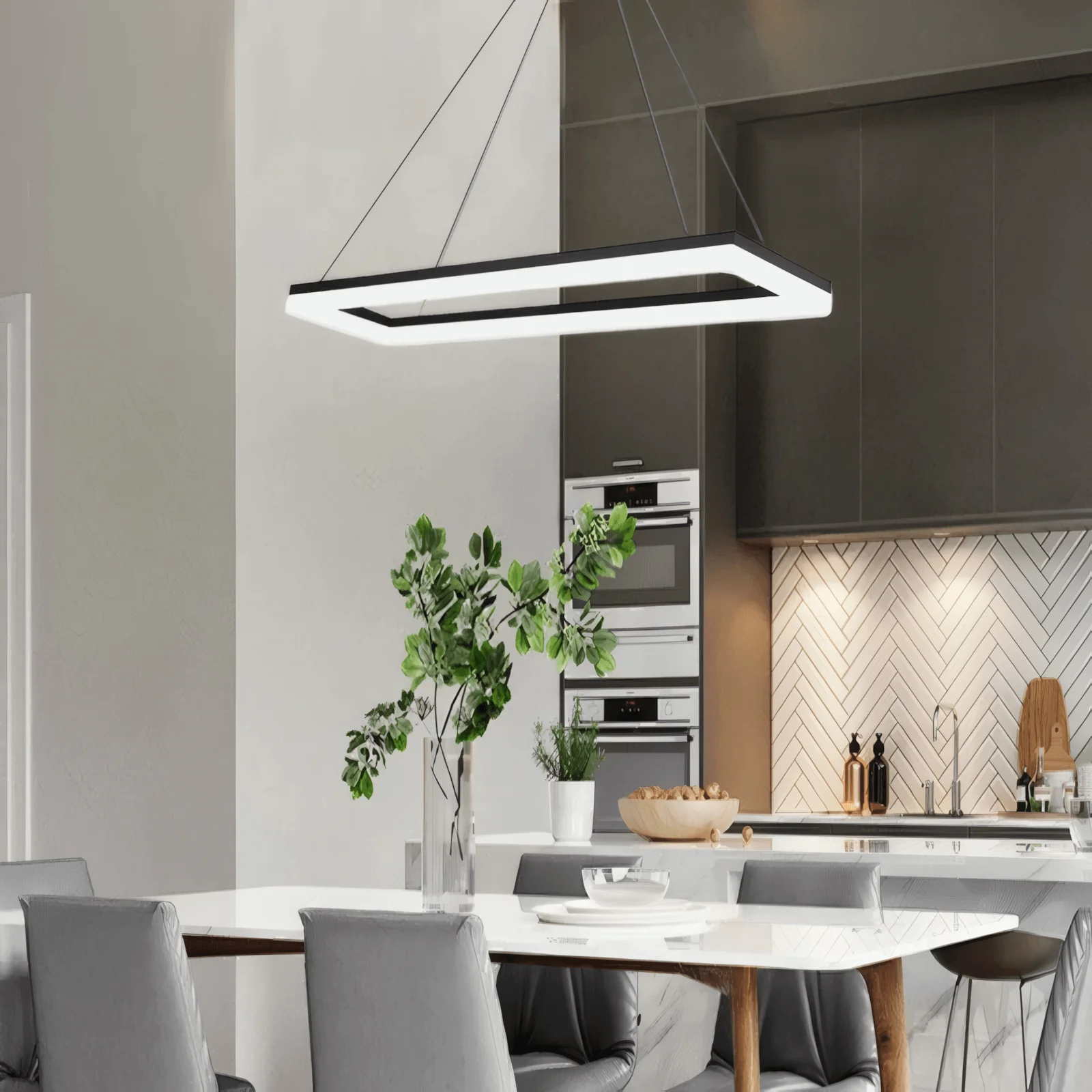
Energy Efficient Lighting
Sign up to get 18% off your first purchase
Choosing the Best Kitchen Island Pendant Lights for 2025
Selecting the right size and number of pendants
When it comes to selecting a kitchen pendant, size and placement are everything. You want your kitchen island pendant lights for 2025 to look balanced and functional, not overwhelming or sparse. Start by measuring your kitchen island. Each pendant should be about one-third to one-half the width of the island. This ensures they complement the space without dominating it.
The height of your ceiling also plays a big role. For standard 8-foot ceilings, hang your pendants 30 inches above the countertop. If your ceiling is higher, aim for 36 inches. Spacing is equally important. Divide your island into even sections, adding one more segment than the number of pendants. For example, if you’re using three pendants, divide the island into four sections and hang the lights in the inner three.
Tip: Always leave at least 30 inches between each pendant to avoid a cluttered look.
Here’s a quick guide to help you plan:
Measurement Type |
Guideline |
|---|---|
Pendant Spacing |
Divide the island into even segments, one more than the number of pendants. |
Height Above Counter |
Hang pendants 30 to 36 inches above the countertop. |
Width Relative to Island |
Each pendant should be one-third to one-half the island’s width. |
For larger islands, consider adding more pendants while maintaining proper spacing. Always centre the first pendant over the middle of the island for a symmetrical look.
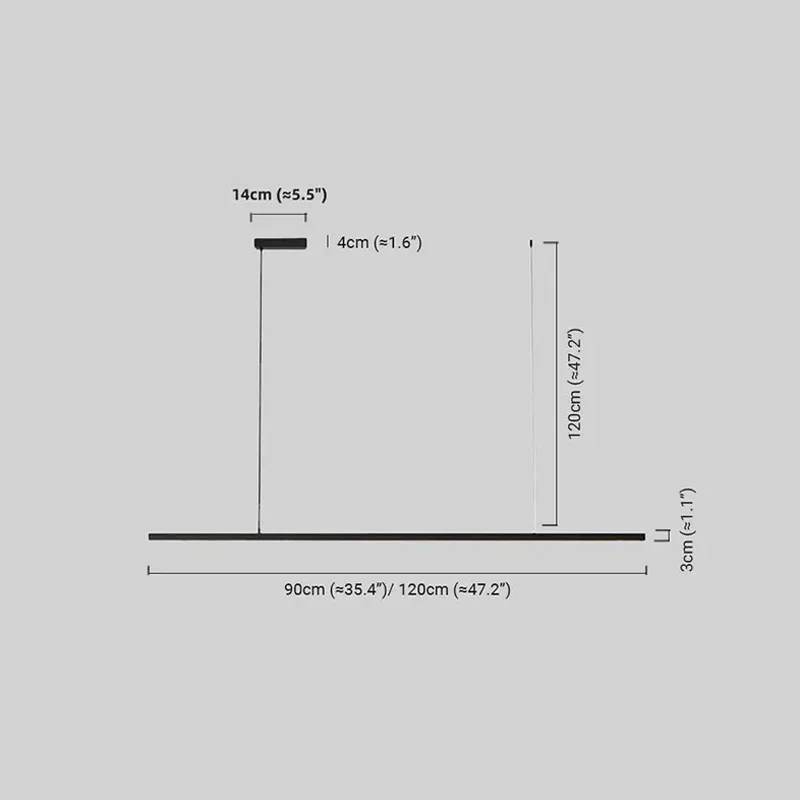
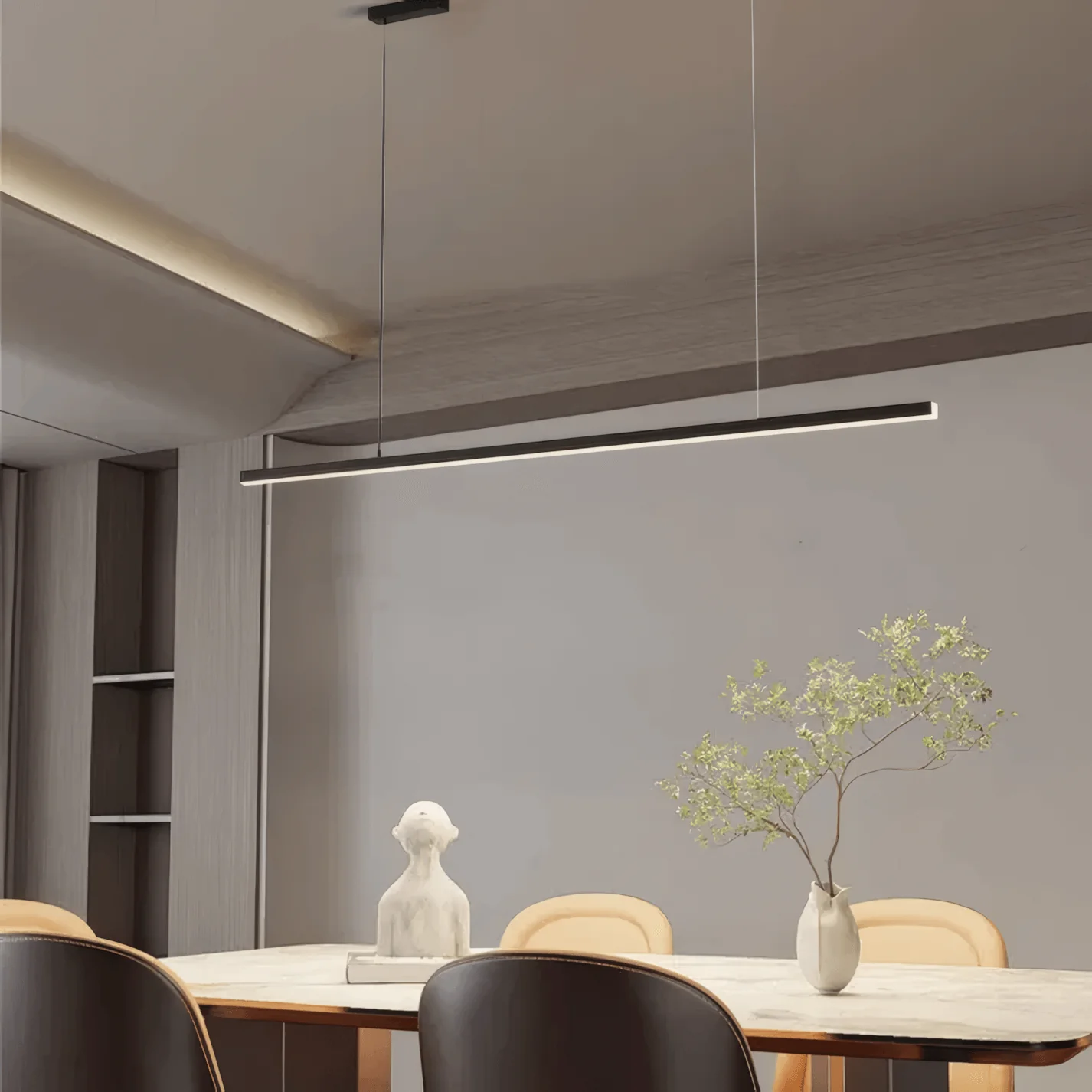
Matching pendant styles with kitchen aesthetics
Your pendant lights should do more than illuminate—they should elevate your kitchen’s style. Different styles for kitchen pendant lighting can transform the mood of your space. For a modern, minimalist kitchen, sleek glass pendants with geometric shapes work beautifully. If you prefer a vintage vibe, retro orange pendants add a pop of colour and nostalgia.
Here are some popular pendant styles and their aesthetic matches:
Pendant Light Style |
Description |
Kitchen Style |
|---|---|---|
Timeless appeal, sleek design |
Complements various kitchen styles |
|
Minimalist charm |
Achieves a sleek, modern look |
|
Retro Orange Pendant Light |
Vintage vibe, adds colour |
Invokes nostalgia in modern settings |
Nordic Lava Pendant Light |
Striking appearance with warm hues |
Serves as a bold centrepiece |
For open-plan kitchens with neutral tones, glass pendants with clean lines enhance the space’s elegance. In contrast, darker kitchens with natural wood accents pair well with glossy black shades for a sophisticated touch.
Tip: Choose pendant lights that reflect your personality while blending seamlessly with your kitchen’s design.
Ensuring functionality for task and ambient lighting
Pendant lights aren’t just decorative—they’re essential for both task lighting and ambient lighting. Task lighting focuses on specific areas, like your kitchen island, where you chop, cook, or bake. It should be two to three times brighter than ambient lighting to ensure safety and efficiency. Pendant lights with adjustable brightness are perfect for this purpose.
Ambient lighting, on the other hand, provides general illumination. It sets the mood and makes the space feel inviting. Combining both types of lighting creates a layered effect, ensuring your kitchen is both functional and cosy.
Tip: Use dimmable pendant lights to switch between task lighting and ambient lighting effortlessly.
For example, when hosting a dinner party, dim the lights for a warm, relaxed atmosphere. During meal prep, increase the brightness to reduce shadows and improve visibility. This flexibility makes pendant lights a versatile choice for modern kitchens.
Technical Tips for Kitchen Island Pendant Lighting
Best bulb types for energy efficiency (e.g., LED, CFL)
Choosing the right bulb is crucial for energy efficiency. LEDs are the top choice for kitchen pendant lighting. They consume significantly less energy compared to traditional incandescent bulbs while offering excellent light output to energy used. For example, a Utilitech LED bulb costs around $20 and lasts up to 23 years, making it a cost-effective and energy-saving option. Similarly, the EcoSmart LED bulb, priced at $25, is designed for recessed lights and provides long-lasting performance.
LEDs also produce minimal heat, which keeps your kitchen cooler—an added bonus during summer months. If you’re looking for good quality LED down lighting, opt for bulbs with a high Colour Rendering Index (CRI). This ensures accurate colour representation, which is essential for food prep and presentation.
Compact Fluorescent Lamps (CFLs) are another energy-efficient light source. While they’re less popular than LEDs, they still use less energy than incandescent bulbs. However, LEDs remain the superior choice due to their longer lifespan and better dimmable capabilities.
Tip: Always check the packaging for energy ratings and certifications like Energy Star to ensure you’re getting the most efficient bulb for your kitchen pendant lights.
Dimmable options for flexibility and energy savings
Dimmable light bulbs are a game-changer for kitchen lighting. They let you adjust the brightness to suit different activities, whether you’re chopping vegetables or enjoying a cosy dinner. Lowering the brightness not only saves energy but also extends the lifespan of your bulbs.
Here’s a quick look at the benefits of dimmable options:
Benefit |
Description |
|---|---|
Energy Savings |
|
Extended Lifespan |
Dimming lights can help them last longer. |
Mood Setting |
Adjusting light levels can create different atmospheres. |
For instance, dimmable LEDs allow you to switch between bright task lighting and softer ambient lights effortlessly. Pairing them with a smart LED light bulb adds even more flexibility. You can control the brightness and colour temperature through an app or voice commands, making it easier to customise your kitchen’s lighting.
Tip: When installing a kitchen pendant lamp, ensure it’s compatible with dimmable bulbs and dimmer switches for optimal performance.
Installation tips for optimising energy efficiency
Proper installation plays a big role in maximising energy efficiency. Here are some expert tips to keep in mind:
Hang pendant lights 30 to 36 inches above the kitchen island. This height ensures even light distribution and prevents glare.
Use a level to align multiple pendants perfectly. Uneven lights can affect both aesthetics and functionality.
For larger islands, install two or more pendant lights to achieve balanced coverage.
Add dimmers to your overhead fixtures. This allows you to adjust the brightness based on your needs, enhancing both functionality and ambiance.
Consider smart bulbs for customisable lighting. They let you switch between bright light for food prep and warmer tones for relaxation.
If you’re also using under-cabinet lighting, make sure it complements your pendant lights. Combining these two types of lighting creates a layered effect, improving both functionality and style.
Tip: Always consult a professional electrician when installing a kitchen pendant lamp to ensure safety and efficiency.
Designing the Perfect Kitchen Pendant Lighting
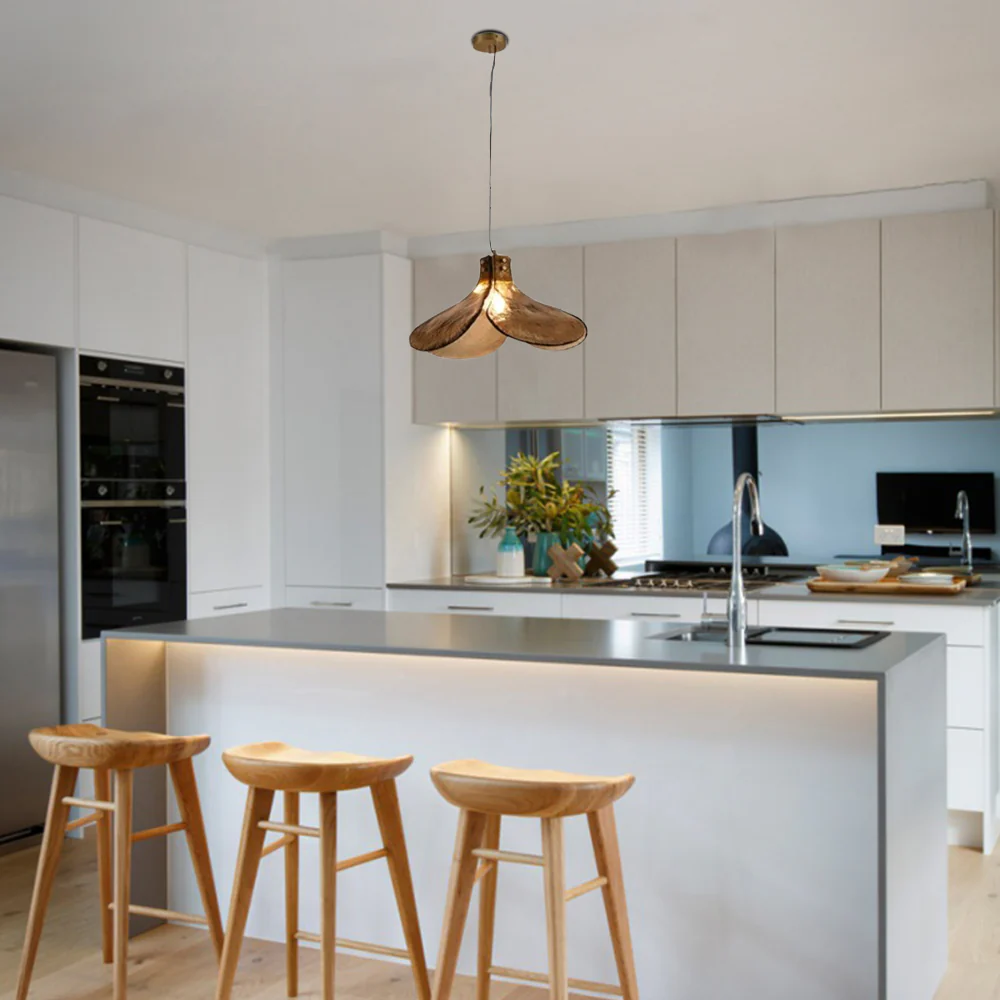
Creating the right ambience with colour temperature
The colour temperature of your pendant lights can completely transform your kitchen’s atmosphere. Measured in Kelvin (K), it determines whether the light feels warm and cosy or bright and energising. For a relaxed vibe, choose warm temperatures between 2700K and 3000K. These are perfect for creating a welcoming space where you can unwind or enjoy a family meal. Cooler temperatures, ranging from 5000K to 6000K, are ideal for task-oriented activities like chopping vegetables or reading recipes. They provide a crisp, energising light that keeps you focused.
To strike the right balance, consider layering your lighting. Use neutral-coloured ambient lights (2700K-3500K) as a base and add pendant lights with a colour temperature that complements your kitchen’s functional needs. This approach ensures your space is both practical and inviting.
Tip: Experiment with tunable-white LED pendants. They allow you to adjust the colour temperature throughout the day, offering flexibility for different activities.
Layering light for a balanced and functional space
Layering light is the secret to a well-lit kitchen. It combines ambient, task, and accent lighting to create depth and functionality. Here’s how each layer contributes:
Lighting Type |
Purpose |
|---|---|
Provides general illumination, making the space feel open and navigable. |
|
Task Lighting |
Focuses on specific areas like the kitchen island, ensuring precision during food prep. |
Accent Lighting |
Highlights architectural features or decor, adding character to the room. |
Start with ambient lighting as your foundation. Add task lighting, such as pendant lights, directly over the island for focused illumination. Finally, use accent lighting to draw attention to unique features like a backsplash or artwork.
Tip: Uplighting techniques with LED pendants can minimise glare while evenly distributing light across the room.
Positioning lights for optimal illumination and safety
Proper positioning of your pendant lights ensures both functionality and safety. Hang them 30 to 36 inches above the countertop to avoid glare and shadows. For larger islands, use multiple pendants spaced evenly to cover the entire surface. Always centre the first pendant over the middle of the island for symmetry.
Effective positioning also involves combining overhead and under-cabinet lighting. This eliminates dark spots and ensures comprehensive illumination. Stick to a colour temperature of 2700K-3000K for accurate food colour perception, making your kitchen both practical and visually appealing.
Tip: Consult a professional to ensure your lighting setup meets safety standards and enhances your kitchen’s overall design.
Energy-efficient kitchen island pendant lighting offers so much more than just savings on your electricity bill. It enhances your kitchen’s functionality, creates a welcoming atmosphere, and reduces your environmental impact. With the right choices, you can enjoy stylish lighting that works hard for you.
Remember: Look for certified energy-efficient options, choose designs that match your kitchen’s vibe, and prioritise functionality.
By making thoughtful decisions, you’ll create a kitchen that’s not only beautiful but also sustainable. Why not start exploring your options today? 🌟
FAQ
What is the best bulb type for energy-efficient pendant lighting?
LED bulbs are your best bet. They use less energy, last longer, and produce minimal heat. Plus, they come in dimmable options, giving you flexibility for different lighting needs. Look for bulbs with high Colour Rendering Index (CRI) for accurate colour representation.
How do I choose the right pendant size for my kitchen island?
Measure your island’s width. Each pendant should be one-third to one-half of that width. For larger islands, use multiple pendants spaced evenly. Hang them 30–36 inches above the countertop for optimal illumination and balance.
Can pendant lights be used for both task and ambient lighting?
Absolutely! Choose dimmable pendants to switch between bright task lighting and softer ambient lighting. This versatility lets you adjust the mood and functionality of your kitchen space with ease.
Are smart bulbs worth it for kitchen pendant lighting?
Yes, they’re a game-changer. Smart bulbs let you control brightness and colour temperature via apps or voice commands. They’re energy-efficient and offer customisable lighting options, making your kitchen more functional and stylish.
How can I ensure my pendant lights are energy-efficient?
Look for certifications like Energy Star or Title 20. Choose LED bulbs with high lumens per watt. Install dimmers to reduce energy use and extend bulb lifespan. Proper positioning also helps maximise efficiency and illumination.

